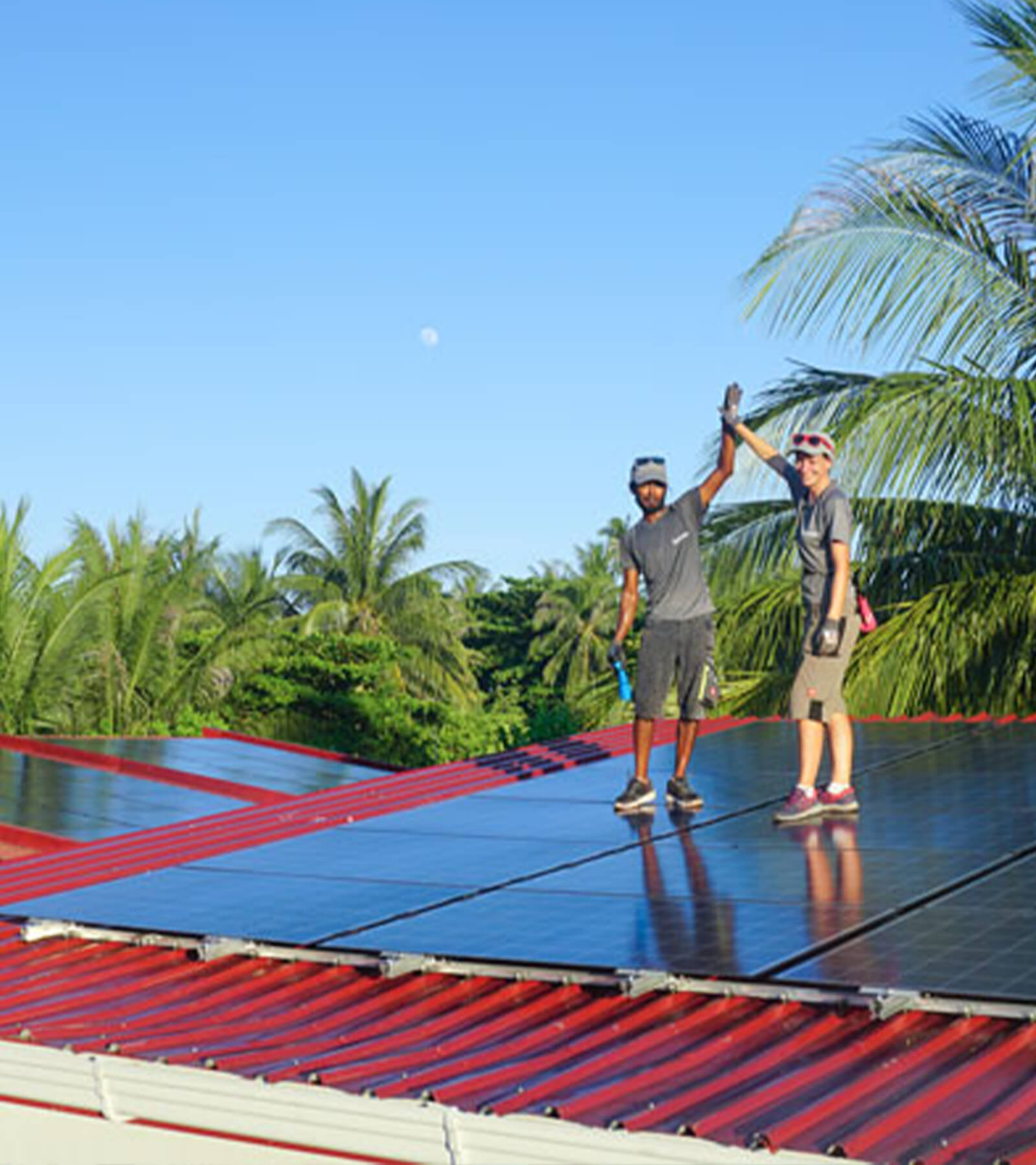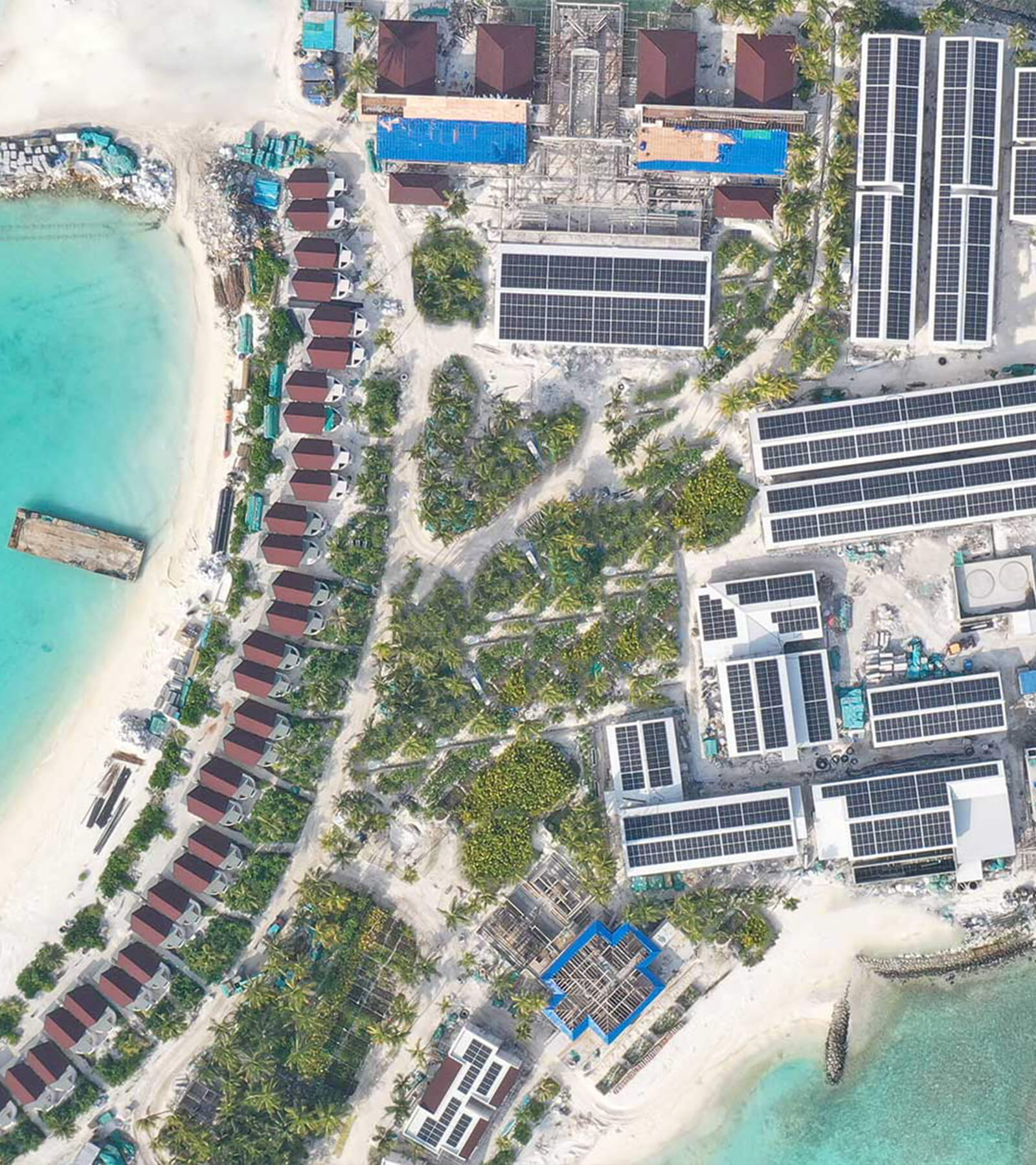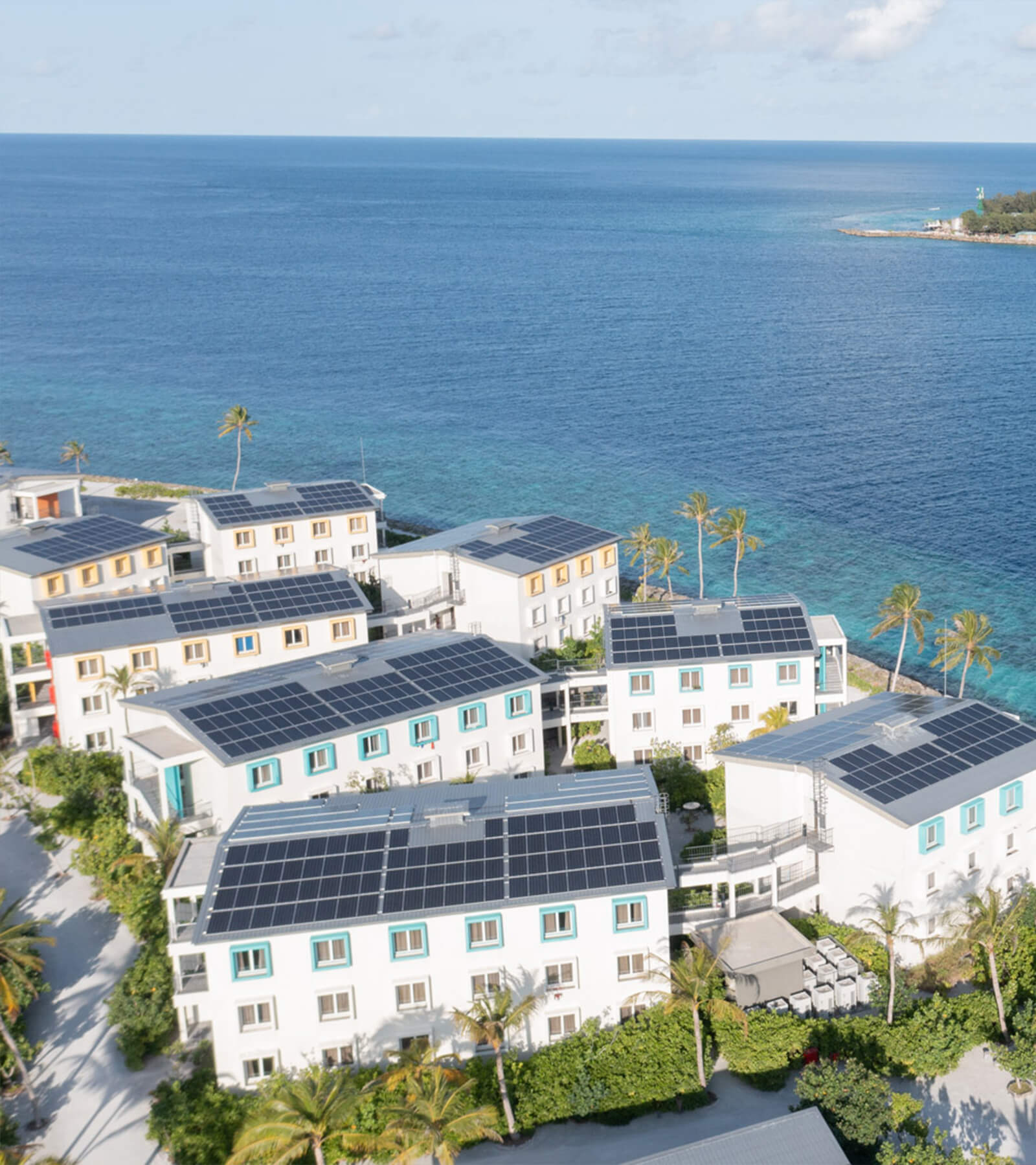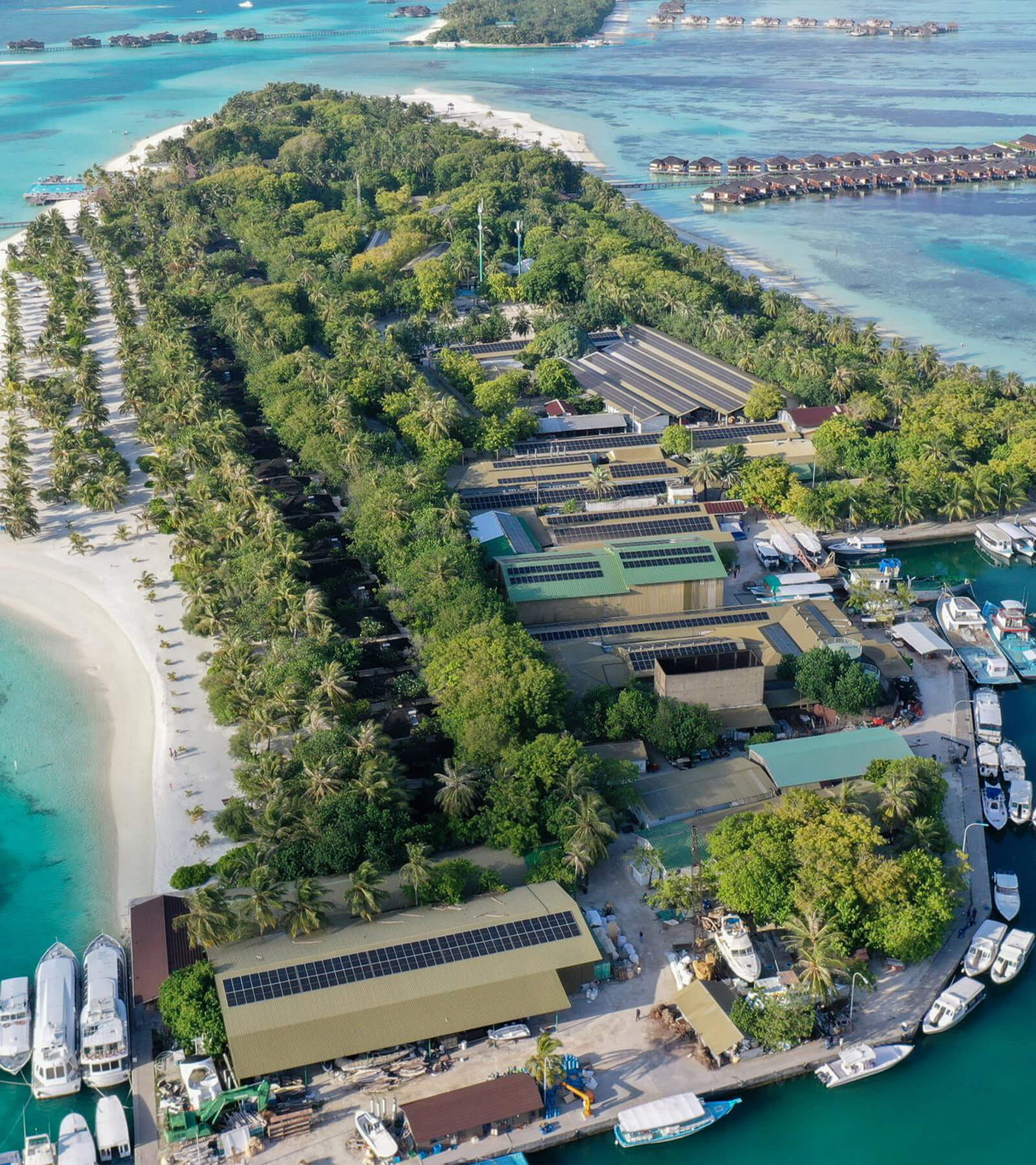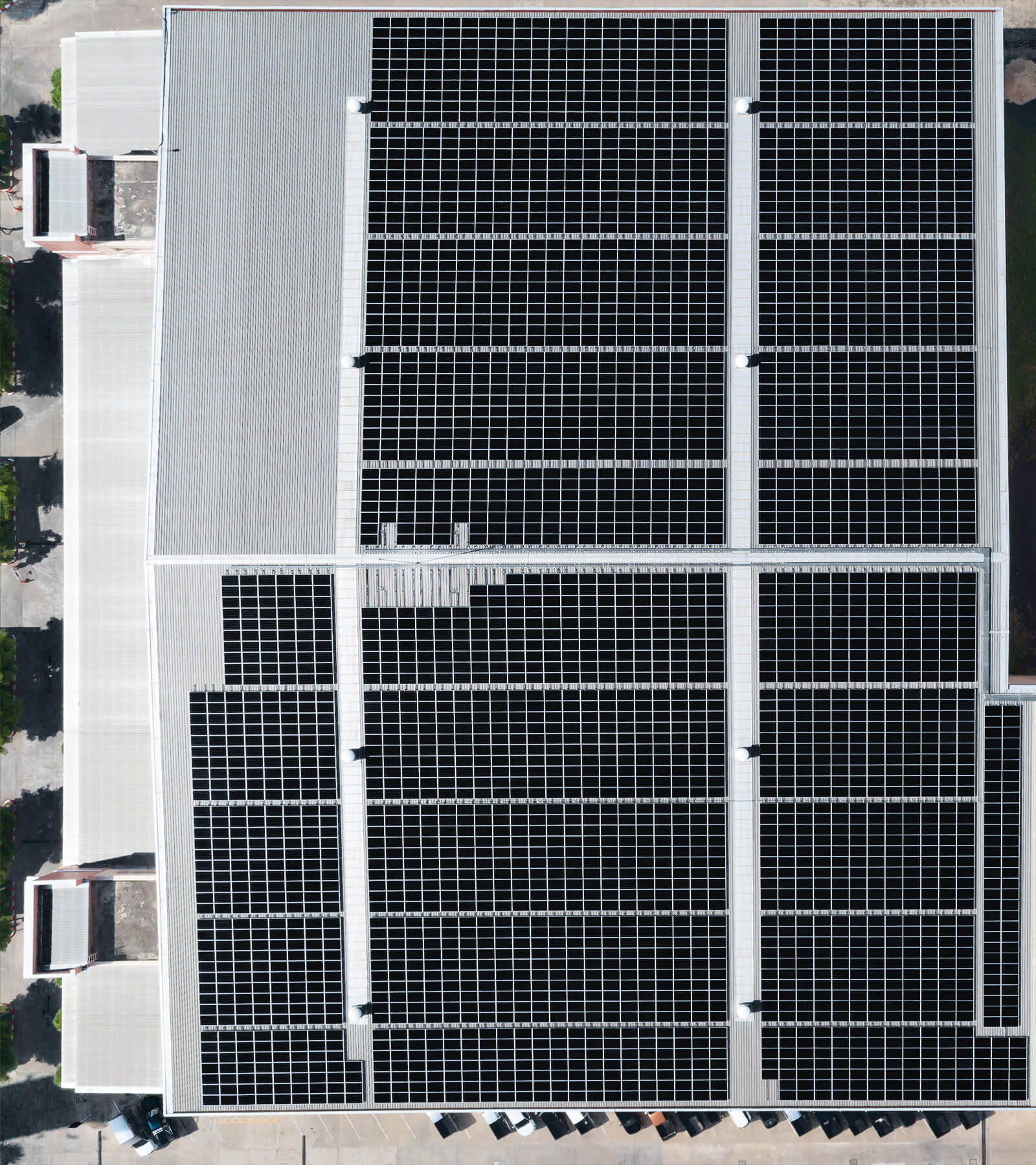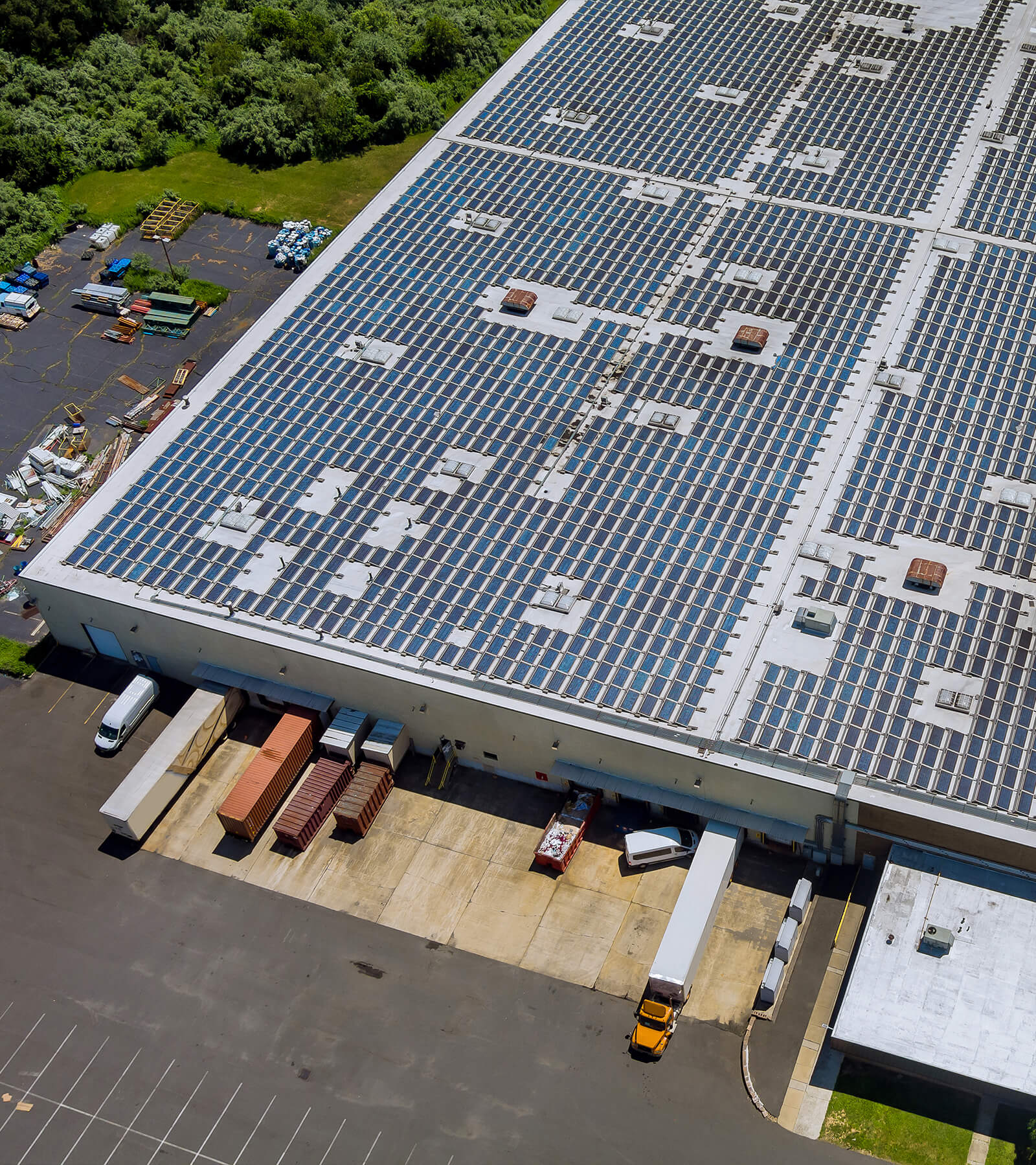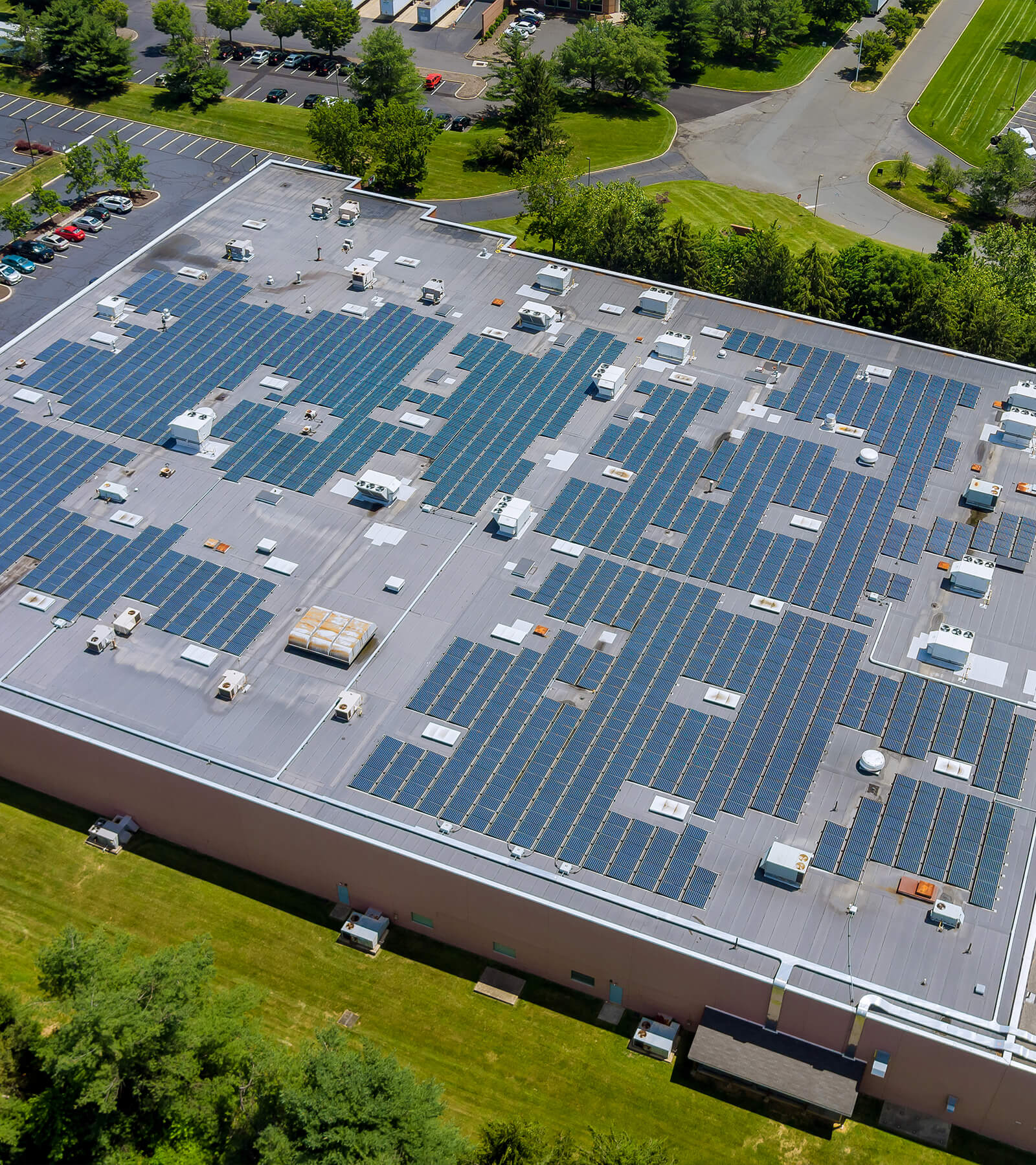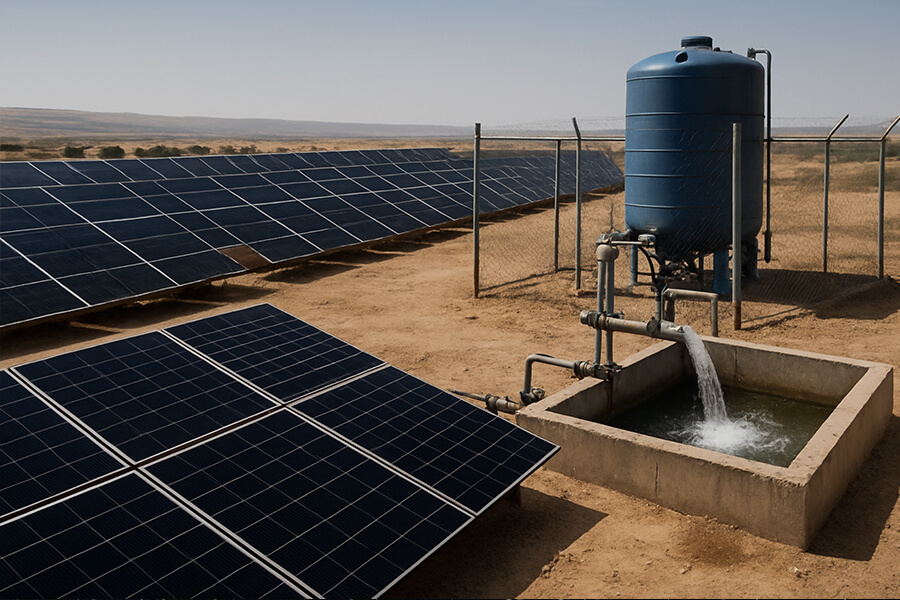Watch Barcelona skaters defy the sun! Discover how a 50kW solar system recreational cooling setup – using absorption chillers & waste cold recovery – keeps an ice rink at -5°C using 60% less energy. COP28-featured innovation proving solar isn’t just for power, it’s for serious chill. ❄️☀️
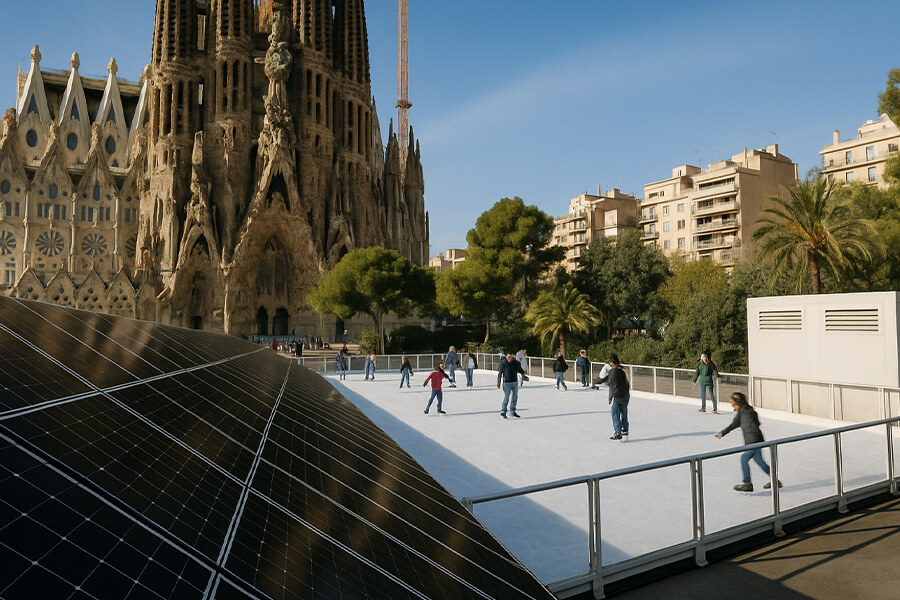
The Barcelona Brain-Freeze Paradox
Picture this: Gliding effortlessly across a pristine sheet of ice, the satisfying shhhk of blades cutting through frost… while outside, the iconic Mediterranean sun beats down on Barcelona, where the aroma of paella wafts through streets lined with Gaudí’s masterpieces. You’re not sipping hot cocoa; you’re more likely clutching a refreshing horchata. It feels like a glorious, climate-controlled practical joke on physics itself.
Welcome to the heart of this beautiful contradiction at the Barcelona Climate Hub (located in Dreta de l’Eixample, a real and active sustainability center). Here, defying both logic and the local thermostat, thrives a year-round ice rink. The sheer audacity of maintaining a frosty -5°C playground in a city known for its warmth is impressive. But the real punchline, the twist that makes everyone do a double-take? This icy oasis is kept reliably frozen, primarily powered by… sunshine. Cue the record scratch.
The Thermal Tightrope Walk
Let’s quantify the absurdity (because engineers love numbers). Barcelona’s climate is no joke for ice-making:
| Climate Factor | Barcelona Average | Ideal Ice Rink Requirement |
|---|---|---|
| Winter Temp (Dec-Feb) | ~10-15°C (50-59°F) | Consistent -5°C (23°F) |
| Summer Temp (Jun-Aug) | ~25-30°C (77-86°F) | Consistent -5°C (23°F) |
| Annual Sunshine Hours | ~2,500+ hours (Source: Meteorological Service of Catalonia) | The very energy source causing the cooling challenge! |
| Relative Humidity | Often high, especially near the coast | Increases cooling load (dehumidification needed) |
(Sources: Generalitat de Catalunya – Meteorological Service, Climate-Data.org)
Maintaining that crucial -5°C surface temperature against Barcelona’s ambient heat isn’t just hard; it’s traditionally an energy-guzzling nightmare. Conventional electric compression chillers fight an uphill battle against thermodynamics, especially in summer. The energy cost for a typical small-to-mid-sized rink can easily reach €50,000 – €70,000+ per year just for cooling and dehumidification (based on industry benchmarks from sources like the International Ice Hockey Federation – IIHF sustainability reports). In sunny Spain, that often means grid power with a significant carbon footprint. So much for cooling off sustainably.
The Punchline: Sunshine as the Coolant?
This is where the Barcelona Climate Hub rink flips the script. Forget battling the sun; they’ve recruited it. The core energy source keeping skaters gliding isn’t fossil fuels or even just standard grid-pulled electricity – it’s a bespoke 50kW solar system specifically engineered for recreational cooling. Imagine the sun, the very entity trying to melt the rink, being harnessed to keep it frozen solid. It’s the ultimate plot twist in sustainable engineering: using solar energy not (just) to power lights, but to directly create and maintain cold.
The sheer novelty of efficient recreational cooling powered directly by solar energy in this climate is what makes this project a head-turner. It proves that even the most energy-intensive leisure activities can be reimagined for a net-zero future, right under the Mediterranean sun. And the best part? The system does it while sipping horchata – metaphorically speaking – because it’s using 60% less energy than its conventional counterparts. Now that’s a cool trick worth exploring… (Smoothly leads into Part 2: The Engineering)
The “How on Earth (or Sun?)” Reveal
So, how does a 50kW solar system defy Mediterranean thermodynamics to maintain a frosty ice rink? While photovoltaic panels do generate electricity for auxiliary systems (lights, pumps, Zambonis), the true genius lies in thermal engineering that turns Barcelona’s sunshine into liquid nitrogen’s arch-nemesis.
The Core Innovation: Solar Absorption Chillers (The “Anti-Solar Panels”)
Think of these as the thermodynamic equivalent of a judo master – using the sun’s own strength against it. Unlike standard PV panels that convert sunlight to electricity, this system uses solar thermal collectors to capture high-grade heat (150-200°C / 302-392°F) (Solar Heat Worldwide 2024 Report, IEA).
Here’s how they flip the script:
- Sunlight → Heat: Evacuated tube collectors concentrate solar energy to heat a fluid (typically a glycol mix).
- Heat → Cooling: This superheated fluid drives an absorption cycle using a refrigerant/absorbent pair (like lithium bromide/water). The refrigerant evaporates, absorbing massive amounts of heat from the rink’s glycol coolant loop.
- Result: Sunshine becomes the primary fuel for chilling the rink to -5°C. Only minimal electricity powers circulation pumps.
Performance Punch: Solar Chillers vs. Conventional Electric Chillers
| Parameter | Conventional Electric Chiller | Solar Absorption Chiller | Advantage |
|---|---|---|---|
| Primary Energy Input | Grid Electricity (€0.28/kWh in 2025)* | Solar Thermal (Free after CAPEX) | ~70-80% lower operating cost |
| Typical COP | 3.0 – 4.5 (cooling/elec input) | 0.6 – 0.8 (cooling/heat input)** | Uses waste-compatible low-grade heat |
| Carbon Footprint | ~450 g CO₂/kWh (EU Grid Avg.)*** | Near-zero during operation | >90% emissions reduction |
| Peak Demand Impact | High (stresses grid during heatwaves) | Low/None | Grid resilience |
Source: Eurostat Electricity Prices Q1 2025
*Source: IEA Solar Cooling Position Paper 2024
**Source: European Environment Agency 2025 EU Grid Mix
So while the sun’s busy baking paella downstairs, upstairs it’s also running the industrial freezer. Talk about multitasking!
The Second Act: Waste Cold Recovery (Chill Hoarding 101)
Dehumidifying rink air is non-negotiable – without it, you’d get fog thicker than a Gaudí mosaic. Conventional systems waste the cold energy extracted during this process. Not here. This system uses heat exchangers to capture and repurpose every joule of “waste cold”:
- The Waste: Cooling humid air condenses moisture but produces cold exhaust air/water (~8-12°C / 46-54°F).
- The Hack: This cold energy is recovered to:
a) Pre-cool the glycol returning to the absorption chiller (boosting its efficiency by 15-20%),
b) Provide space cooling for adjacent facilities at the Climate Hub.
Impact of Waste Cold Recovery
(Source: ASHRAE Ice Rink Dehumidification Study 2024)
- Recovers 25-40% of the energy traditionally wasted in dehumidification
- Reduces total rink cooling load by 10-15%
- Annual energy savings: ~€6,000-€9,000 (based on 50kW system load)
We’re not letting precious chill escape – we’re hoarding cold like it’s the last ice cube in the Sahara. Every scrap gets reused!
The Synergy: Why 1+1=3
The absorption chiller’s lower efficiency (COP 0.6-0.8) is radically offset by free solar input plus waste cold recovery. This cascading efficiency transforms the system’s economics. Combined with PV panels covering electrical needs, it achieves the project’s 60% total energy reduction – turning a thermal paradox into sustainable reality.
(Smooth transition to Part 3: The project’s global recognition at COP28 and broader implications)
The Green Glory: Why This Isn’t Just Cool, It’s Smart
The Barcelona Climate Hub’s solar-powered ice rink isn’t just an engineering novelty—it’s a blueprint for slashing energy waste in recreational cooling. The hard numbers reveal the true impact of its absorption chiller + waste recovery combo:
| Performance Metric | Conventional Ice Rink | Barcelona Solar System | Reduction |
|---|---|---|---|
| Annual Energy Use | 350,000 kWh* | 140,000 kWh | 60% |
| Operating Cost | €98,000/yr** | €39,200/yr | €58,800 saved |
| CO₂ Emissions | 157.5 tons*** | 63 tons | 94.5 tons eliminated |
| Peak Grid Demand | 120 kW⁴ | 30 kW | 75% reduction |
Source: IIHF Energy Benchmark for 1,800m² Rinks
**Based on Spain’s 2025 commercial electricity rate (€0.28/kWh, Eurostat)
***Calculated using EU grid avg. 450g CO₂/kWh (EEA 2025)
⁴ASHRAE Standard 34-2023 for Refrigeration Loads
This 60% energy cut transforms ice rinks from climate liabilities to sustainability assets. In warm regions like the Mediterranean, where cooling demand drives 40% of building energy use (IEA Cooling Report 2024), the system proves energy-intensive recreation can align with net-zero goals.
Global Recognition at COP28
This innovation didn’t just delight Barcelona’s skaters—it electrified global climate talks. The project was showcased at COP28’s “Sport for Climate Action: Achieving Net Zero” side event in Dubai, organized by the UNFCCC Sports for Climate Action Framework. As a featured case study, it demonstrated how solar thermal tech could revolutionize cooling for sports infrastructure worldwide. With over 70,000 ice rinks globally (IIHF 2025) emitting 50+ million tons of CO₂ annually, scaling this model could cut sector emissions by 30% by 2030.
The Ripple Effect
Beyond rinks, the implications are vast:
- Urban Cooling: Absorption chillers could slash energy for public pools, data centers, or even district cooling networks in heat-stressed cities.
- Energy Equity: Solar thermal cooling bypasses grid constraints—critical for developing nations facing 150% higher cooling demand growth (IEA).
- Policy Catalyst: Spain’s revised Renewable Thermal Incentives (2025) now prioritize solar cooling, citing this project as a model (IDAE).
As heatwaves intensify—2024 was the hottest year on record (WMO 2025)—the message is clear: turning sunshine into sustainable cold isn’t science fiction. It’s survival.
The Icing on the (Solar) Cake: Introducing Maxbo Solar
So, how do you transform ingenious concepts like Barcelona’s solar-powered ice rink from blueprints into frosty reality? Well, this is where we, Maxbo Solar, come skating in. Seeing projects like this is electrifying because they embody our core mission: turning sunlight into transformative energy solutions – even when that means defying Mediterranean thermodynamics.
Beyond Panels: The Maxbo Solar Advantage
We specialize in integrated solar ecosystems that tackle energy-intensive challenges head-on. Unlike conventional solar providers focused solely on electricity, we engineer end-to-end systems where every photon works overtime:
| Maxbo Solar Capabilities | Industry Standard Solar | Impact Advantage |
|---|---|---|
| Custom Thermal Solutions | Basic PV installations | Absorption cooling, industrial heating, thermal storage |
| Waste Energy Recovery | Limited/no integration | 20-40% additional efficiency (Source: DOE) |
| System Intelligence | Static monitoring | AI-driven load balancing for 15-25% cost cuts (IEA Digitalization Report 2025) |
| Carbon Reduction Scope | Partial (electricity only) | Full-scope decarbonization (Scope 1-3) |
Our projects consistently deliver 40-70% operational savings for clients in sectors like recreation, manufacturing, and hospitality – all while slashing emissions.
Why the Barcelona Rink Resonates
This project mirrors our philosophy:
- Solar Synergy: Harnessing sunlight for both electricity (PV) and thermal processes (absorption cooling) multiplies ROI.
- No Waste Tolerance: Just as Barcelona captures “fugitive cold,” our systems recover waste heat/cold from HVAC, machinery, or processes – converting inefficiency into asset.
- Climate-Responsive Design: With global cooling demand soaring 150% since 2000 (IEA), we build solutions adaptable to heatwaves, humidity, and grid volatility.
Your Turn to Skate Ahead
Inspired to explore how solar can revolutionize your energy demands? Whether you’re freezing ice in Barcelona, chilling a data center in Dubai, or cooling a factory in Detroit – Maxbo Solar designs bespoke systems that turn sunlight into your most powerful asset.
Visit us at www.maxbo-solar.com to discover how we can transform your energy goals from “meltdown” to “cool achievement.” Let’s engineer a future where sustainability doesn’t just work – it wins.

